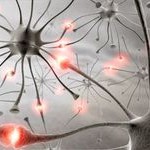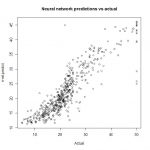Neural Networks for Trading Software
 The majority of contemporary theories claim that it is possible to predict the price of an asset by analyzing its historical performance. Contrary to this belief, there is also a theory that all prices change randomly and it is absolutely impossible to forecast the outcome. Provided that you have no intention to use historical data for analysis, the only strategy which seems to be possible is to sell short and hold. However, a large amount of research shows us that it is possible to make more money if you use different analysis tools. That is what I would like to investigate in this article.
The majority of contemporary theories claim that it is possible to predict the price of an asset by analyzing its historical performance. Contrary to this belief, there is also a theory that all prices change randomly and it is absolutely impossible to forecast the outcome. Provided that you have no intention to use historical data for analysis, the only strategy which seems to be possible is to sell short and hold. However, a large amount of research shows us that it is possible to make more money if you use different analysis tools. That is what I would like to investigate in this article.
Neural networks are sentient intelligence
At the present time, it is almost impossible to imagine trading without algorithms. It is assumed to be way better than placing all of your orders manually. However, even if you place orders automatically, you still have to sit in front of your computer. Traders always want to spend as little time as possible doing that. Probably, it would be a great idea to leave the trading to some sentient artificial intelligence which works exactly the same way as the human brain does. There is actually a solution like that. Neural networks are trainable algorithms that emulate the work of the human brain. This gives them self-training ability to formalize unclassified information and provide analysis of historical data.
Six decades of neural network history
Neural networks were originally pioneered by Bernard Widrow of Stanford University in the 1950s. The idea was that rather than using a digital model, in which all computations manipulate zeros and ones, a neural network would work by creating connections between processing elements – the computer equivalent of neurons. The organization and weights of the connections determine the output. Since the 1950s, the idea has been significantly developed, and now neural networks are used in different areas, such as recognition systems, industrial robotics, medical imaging, data mining, and aerospace applications.
Neural networks are applicable to trading
Now we have a great opportunity to use neural networks in trading as well. The neural network receives the data provided by you or some market data feed and analyzes it. After the analysis is over, you receive the output data with a forecast of the possible performance of the asset in the future. The greatest advantage of neural networks is that you can perform analysis of the forecast after some time passes and you receive historical data of its performance as well. Then you can start all over again.
Case studies
If we take some historical data into consideration and analyze it, we will receive output data. After that, we will be able to perform analysis of the data and check if the forecast of the neural network was successful. That is how we can evaluate the performance of a neural network and decide if we want to proceed with this net or choose another one.
Artificial neural networks are widely used to analyze traditional classification and prediction problems in accounting and finance.
For example, it is possible to apply neural networks to fraud and bankruptcy prediction. The University of Patras, Department of Mathematics conducted an investigation on this issue. A large number of case studies have been performed and the results were different every time. This illustrates that success depends on the algorithm itself and not on its type. However, there are some figures I would like to elaborate on.
A bankruptcy forecast performance analysis showed that the accuracy of 5 different neural networks differed from 36% to 74%, while accuracy of fraud detection forecast varied from 75% to 93.2%.
Nevertheless, it is obvious from this analysis that the predictions of neural networks are more often correct than incorrect.
That is the reason why the application of neural networks to financial markets is becoming more widely used in different areas.
The downside of the solution
This solution seems to be perfect; however, it is not. There are some disadvantages which are the reason why neural networks are not used by every single trader in the world.
The application of neural networks to trading is relatively new. Because of that, it is still not proven that neural networks can analyze historical data perfectly with the expected outcome. The main disadvantage of neural nets is that they rely solely on the historical performance of the asset, and it is entirely impossible to foresee some events which can greatly affect the market. Also, regardless of graphical user interfaces, some neural networks use complex mathematical formulas and this can reduce the functionality of NN.
According to the opinion of some financial professionals, the market is a complex structure and it is impossible to learn all its trends. Provided that it is impossible for a human being to make accurate predictions, artificial intelligence which imitates a human brain cannot do it, either.
Which software to choose
Neural networks can be modified to work with a significant number of software solutions. These systems have their own features and everyone can definitely choose something according to their preferences. However, it is impossible to ensure that neural networks will perform analysis and make forecasts exactly as one would want. That is the reason why I think that the best solution is to create your own neural network the same way as you would create any other algorithm. Creating the custom software solution with the use of neural networks could possibly be the best choice.
Summary
Currently, neural networks are not as popular among traders as other types of algos. It is obvious that they are getting more acknowledged by traders across the world. In my opinion, neural networks will develop even more.
You will be successful in trading with neural network algorithms only when you stop searching for the best one. You should never forget that this is a trading strategy which makes you successful, not a neural net.
By Alex Phelps, VP Business Development, ETNA Software.

Hello Jesus, thanks for your conmmet.I would say its the eternal battle innovation and power. Today its the social networks and the mobile shareholders, ten years ago it was the search engines and ten years from now would be something else. The most difficult thing is exactly that, to know which fights are the critical ones.